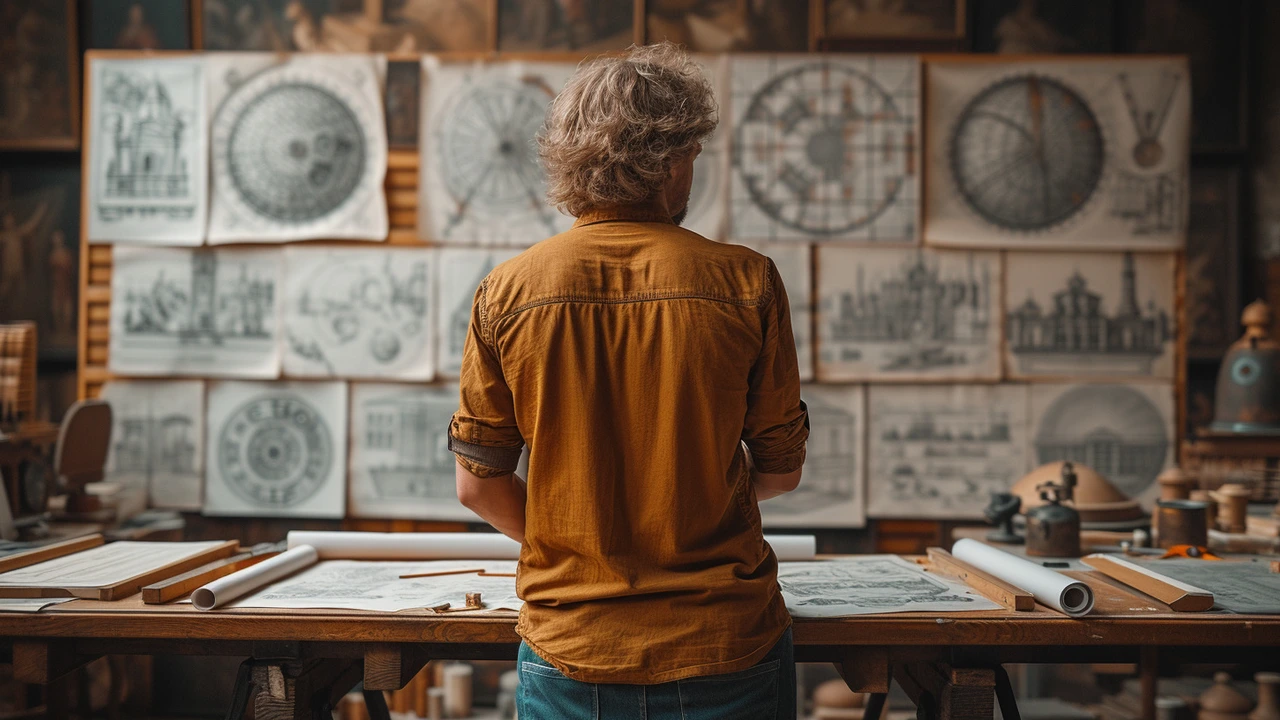Introduction to Renaissance Architecture
Renaissance architecture, a revival of the classical Greek and Roman architectural principles, emerged in Italy during the 15th century. This period marked a departure from the complex Gothic style towards a more measured and harmonious approach that emphasized symmetry, proportion, and geometry. Architects of this era, such as Brunelleschi, Leon Battista Alberti, and Michelangelo, looked back to the ancient world for inspiration, combining the technical advancements of their time with the elegance of classical architecture. The Renaissance period breathed new life into architectural design, laying the groundwork for modern architecture with its emphasis on harmony, balance, and a deep appreciation for the classical past.
The Principles of Renaissance Architecture
The essence of Renaissance architecture can be distilled into a few core principles: symmetry, proportion, and the incorporation of classical elements such as columns, pilasters, and arches. These principles were not mere design choices but reflections of a deeper understanding of beauty, drawing from the Vitruvian virtues of strength, utility, and beauty. Renaissance architects paid meticulous attention to proportions, often employing mathematical ratios to achieve a sense of balance and harmony in their structures. This mathematical approach to design not only ensured aesthetic appeal but also imbued buildings with a sense of order and clarity, making them comprehensible and pleasing to the human eye.
Renaissance Architecture's Influence on Contemporary Design
Fast forward to the present day, and it's evident that the principles of Renaissance architecture continue to shape modern design. Contemporary architects often draw upon the symmetry, proportion, and use of classical elements characteristic of Renaissance architecture to create spaces that are both beautiful and functional. This is most visible in public buildings and spaces, where the grandeur and harmony of Renaissance design principles can be employed to great effect. Moreover, the Renaissance emphasis on natural light and spacious interiors has also found its way into modern residential design, influencing the way homes are designed to be both aesthetically pleasing and comfortable for living.
Case Studies: Modern Buildings Inspired by Renaissance
Looking at specific examples, several modern buildings directly reflect the influence of Renaissance architecture. One notable instance is the United States Capitol in Washington, D.C., which incorporates the dome and classical columns reminiscent of Renaissance designs. Similarly, the British Museum in London uses the clear geometry and grandiosity typical of Renaissance buildings to achieve a timeless appeal. These buildings demonstrate how the principles of Renaissance architecture can be adapted to serve modern needs and tastes, proving that good design is truly timeless.
The Role of Renaissance Architecture in Urban Planning
Renaissance architecture has also played a significant role in the development of urban planning. The emphasis on symmetry and proportion was applied not only to individual buildings but also to the layout of cities. The Renaissance ideal of the 'ideal city' was one that was not only beautiful but also functional, with wide streets, public squares, and a coherent urban plan that facilitated easy movement and social interaction. This vision for urban living has influenced contemporary city planning, emphasizing the importance of thoughtful design in creating livable, sustainable urban environments.
Preservation and Adaptation of Renaissance Architectural Heritage
As much as we draw inspiration from Renaissance architecture, there is also a critical need to preserve these historical structures that serve as tangible connections to our past. Preservation efforts around the world aim to maintain these architectural masterpieces for future generations while adapting them to contemporary needs. This delicate balance involves respecting the original design and intent of the buildings while making them accessible and functional for modern use. Through preservation, we ensure that the beauty and wisdom of Renaissance architecture remain a living part of our world, continuing to inspire and inform.
Conclusion: The Timeless Appeal of Renaissance Architecture
In conclusion, Renaissance architecture's impact on contemporary design is both profound and enduring. Its principles of symmetry, proportion, and harmony continue to resonate with architects and designers, offering lessons in beauty and balance that transcend time. As we look to the future, the legacy of Renaissance architecture serves as a reminder that great design is not only about innovation but also about drawing upon the wealth of knowledge and inspiration from our shared past. By embracing the timeless beauty of Renaissance principles, modern design can continue to evolve in ways that are both innovative and deeply rooted in a rich architectural heritage.




Leave a Comments